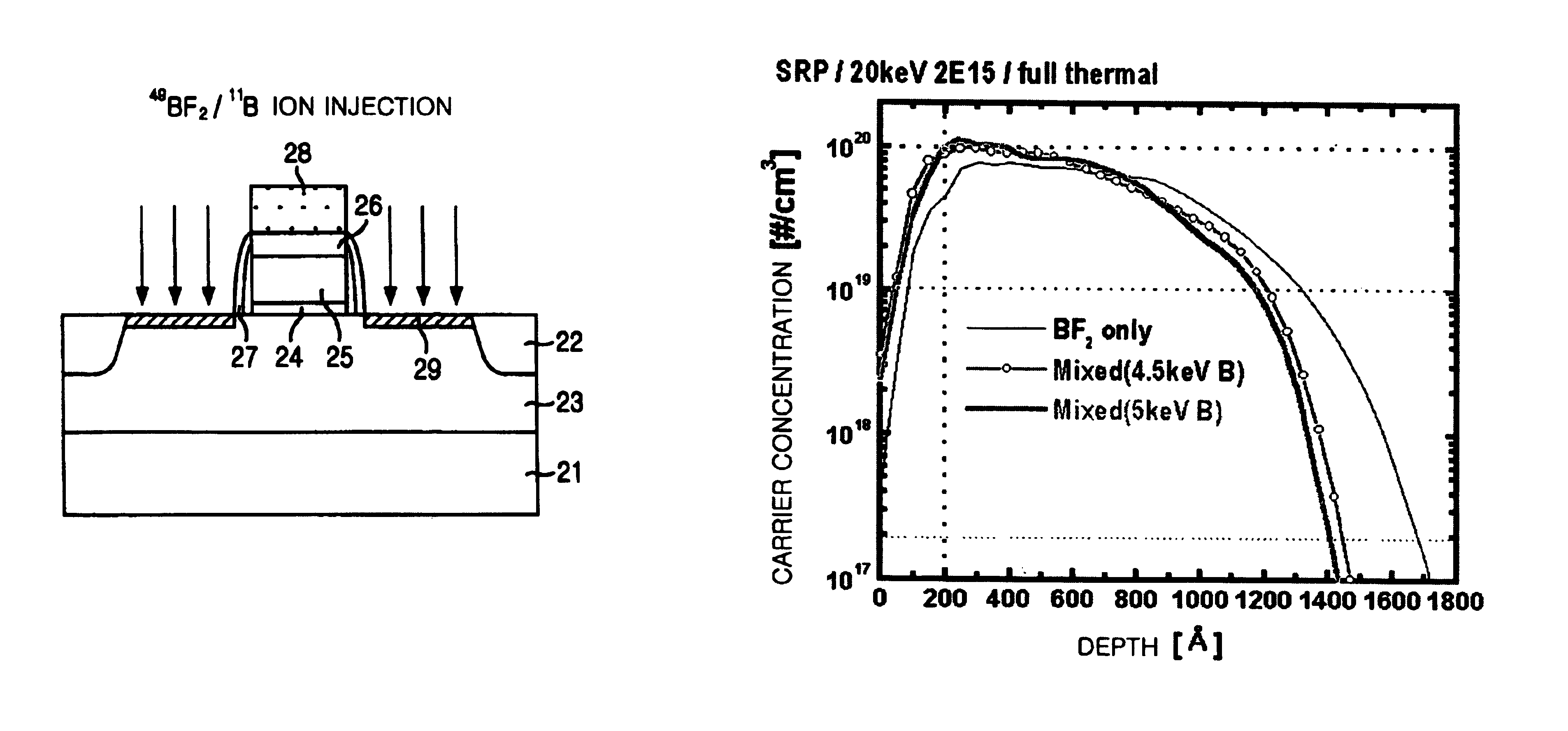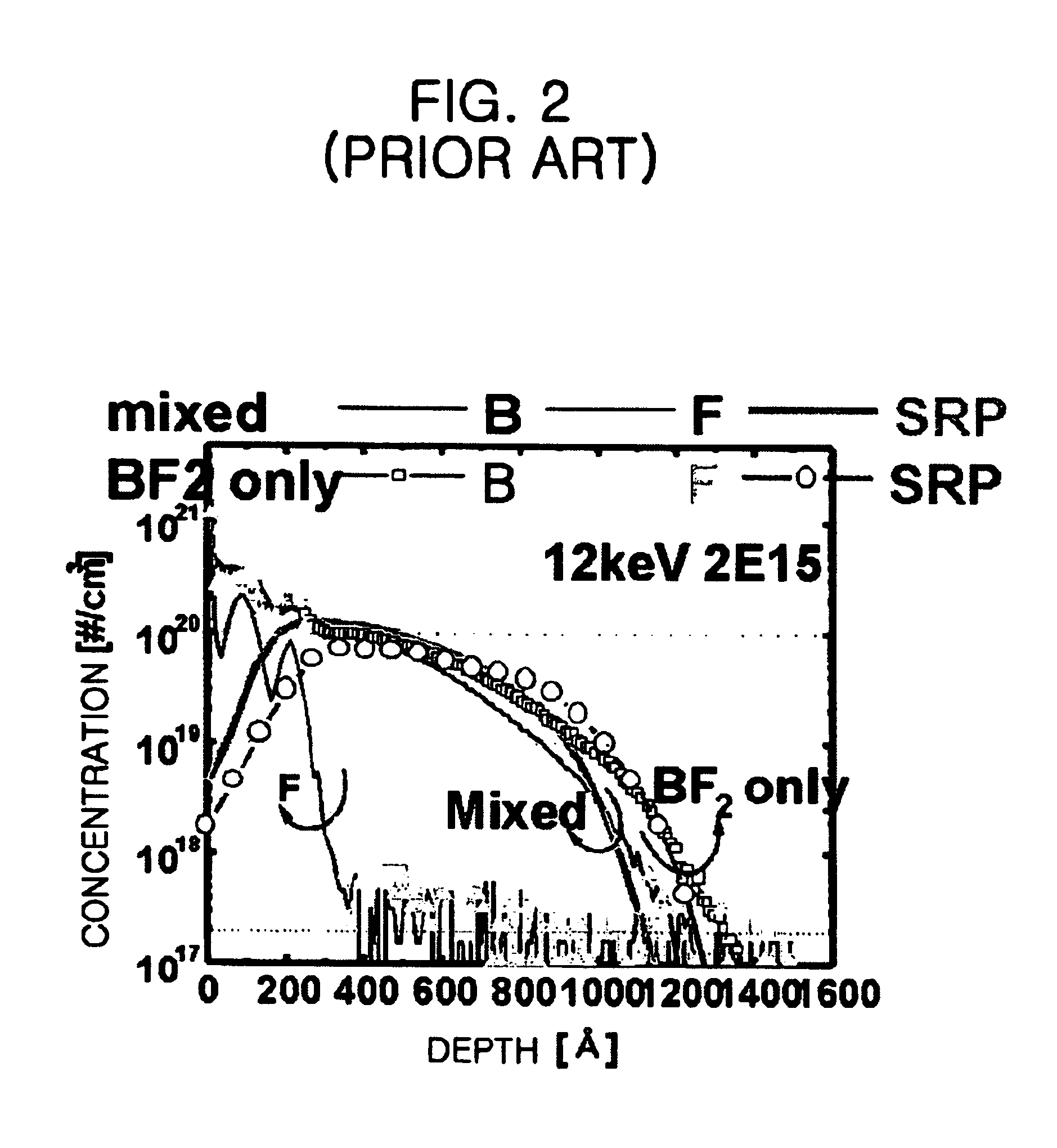Method for manufacturing a semiconductor device with using double implanting boron and boron difluoride
a technology of boron difluoride and semiconductor devices, which is applied in the direction of semiconductor devices, basic electric elements, electrical equipment, etc., can solve the problems of increasing contact resistance, affecting the production efficiency of semiconductor devices, so as to achieve the effect of increasing the output and ion beam
- Summary
- Abstract
- Description
- Claims
- Application Information
AI Technical Summary
Benefits of technology
Problems solved by technology
Method used
Image
Examples
Embodiment Construction
[0030]Hereinafter, a method for manufacturing semiconductor device capacitor according to the present invention will be described in detail, with occasional reference to the accompanying drawings.
[0031]FIGS. 6A and 6B are cross-sectional views showing a method for manufacturing a transistor of a semiconductor device according to an embodiment of the present invention.
[0032]Referring to FIGS. 6A and 6B, a device isolation layer 22 is formed on a silicon substrate 21 using a trench isolation (STI) process. A p-well (not shown) and an n-well 23 are formed on the silicon substrate 21 through high energy ion implantation. Next, a gate oxide layer 24 and a gate electrode 25 are formed by carrying out a usual gate forming process. At this time, a mask oxide layer 26 is formed on an upper part of the gate electrode 25, and a spacer 27 consisting of an oxide layer and a nitride layer are formed on a sidewall of the gate electrode 25. In the figures, the reference numeral 28 denotes a photore...
PUM
 Login to View More
Login to View More Abstract
Description
Claims
Application Information
 Login to View More
Login to View More - R&D
- Intellectual Property
- Life Sciences
- Materials
- Tech Scout
- Unparalleled Data Quality
- Higher Quality Content
- 60% Fewer Hallucinations
Browse by: Latest US Patents, China's latest patents, Technical Efficacy Thesaurus, Application Domain, Technology Topic, Popular Technical Reports.
© 2025 PatSnap. All rights reserved.Legal|Privacy policy|Modern Slavery Act Transparency Statement|Sitemap|About US| Contact US: help@patsnap.com



